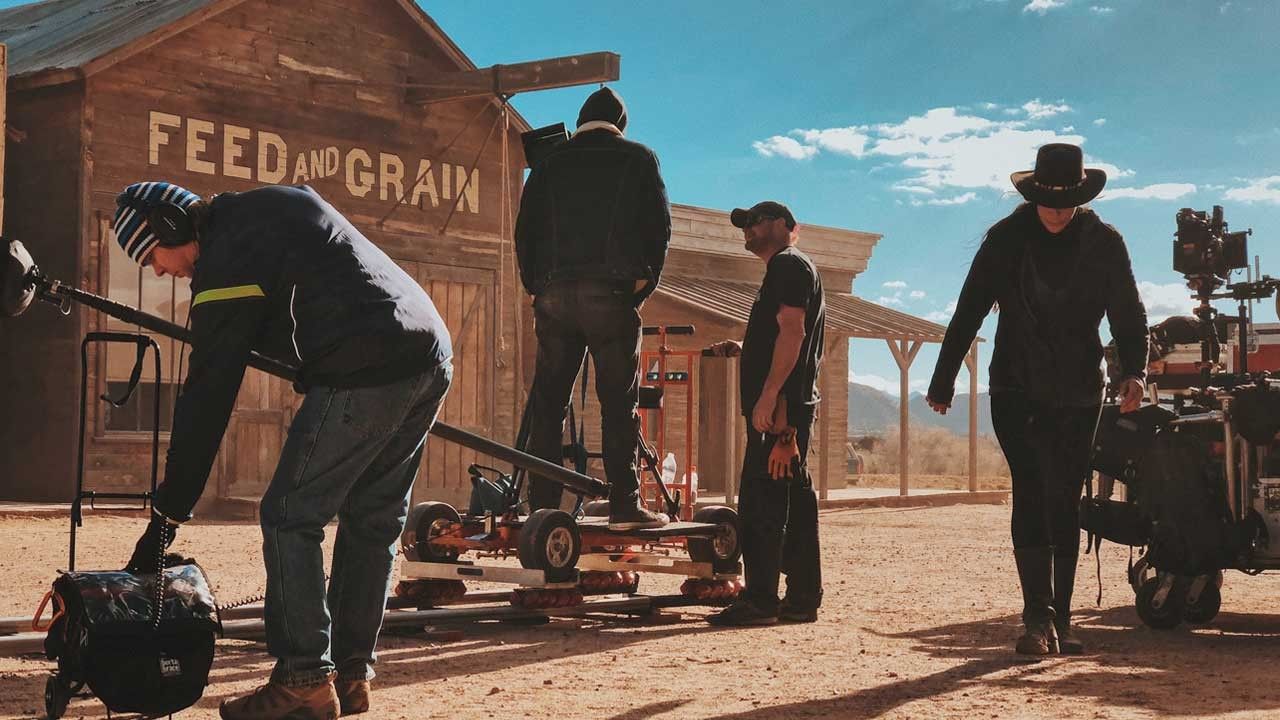
You’ve heard it takes a village. Well, when it comes to making movies, or any kind of film and video content, it takes more than a village.
It takes a video village!
Sorry that was awful.
The village on a production is a film crew. Sometimes small crews, sometimes massive ones.
Truly a big movie, or a large-scale production like Game of Thrones, is the end result of contributions from MANY artists and craftspeople in many departments, all around the world. If you want to become a filmmaker, you need to know and understand what everyone on set is doing!
This is why the Academy Awards initial decision to present best cinematography, editing, hair and make-up off the air was so insulting to so many in the community. Thankfully they reversed it. The people who do that work deserve as much attention and acclaim as everyone else.
But awards and accolades are hardly an important part of what it takes to bring someone's vision to life. That’s the hard work of a film crew
Crews vary a great deal in size but usually depend on the same core film crew positions. It’s amazing how many people get through film school without recognizing all of these different roles, and what they contribute to the process.
There is a ton of value in understanding all the jobs on a movie set. These are careers, and unions you can join. These are skills you can learn to make you a better storyteller and filmmaker, and whether you have the budget to hire a full production team or a skeleton crew, you should know what you’ll need and what to expect of each person.
Because there is no faster way to derail a project than the disrespect everyone's hard work.
Producers might collect the ‘best picture’ statuette, but they aren’t the ones that make sure the movie sounds good, the images are exposed properly, the lead's hair looks right, and that nobody gets hurt on set. To name just a few critical responsibilities. Plus don't you want to know who did what on the movie poster!
Auteur theory is fun for the classroom, but in practice, production is the direct result of a crew’s hard work.
So let’s jump into it!
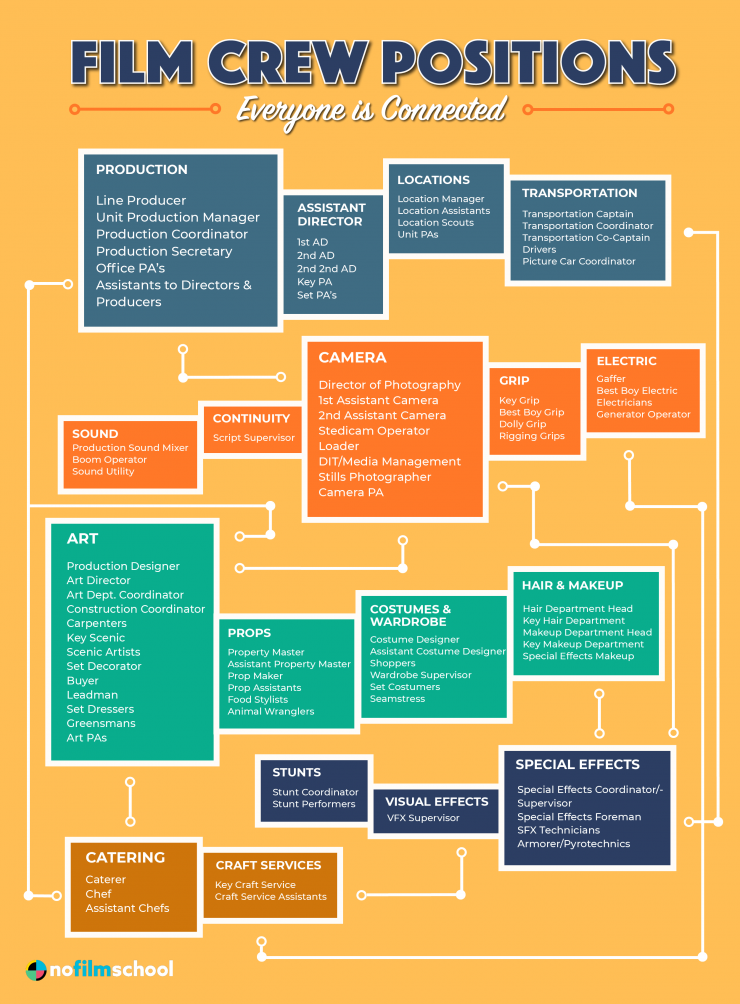
Film crew jobs on a movie set
There are many departments on set, and within each, there is a unique film crew hierarchy.
Typically the above the line personnel (referred to as such because of their placement in the budget) are separated and in leadership positions.
Executive Producers. Producers. Director. Writer. On-screen talent.
These people may not even be very directly involved with the nitty-gritty of making the movie. Of course, these are the people we hear the most about. It might make sense to consider them like generals in a large army.
If you’re making a short film by yourself, then you’ll likely be not only the general but also all the soldiers.
In a big production, some generals never come to the front line.
So who comes below the line?
Well for starters there is a Line Producer. That’s the producer who handles most of the budgeting and the team below the line.
That’s where most of the film crew positions are.
Film production crew
The line producer is one of the leaders(or 'keys') of a group referred to as “production”. This team within the team handles most operations. This group is made up of line producers, production managers, production coordinators, UPMs(Unit production managers), and then production assistants(or PA’s).
There might also be associate producers and co-producers in there, and their roles in the hierarchy depend on many other factors.
A production accountant would fall into this group as well.
So onto the next question:
How many of these movie crew positions do you need to be filled on your project?
Depends on the size and scale of the production. On a tiny short you might just have ONE producer who wears all these hats. That person will be very stressed out.
On a middle range project, you might combine a few of these, and end up with more PA’s just because that makes things cost-friendly. But beware, because if you hire more entry-level personnel to save money you’ll have a much harder time getting desired results.
AD Department
The Assistant Director department COULD be folded into the production team. It really depends on the size. A good set needs a 1st Assistant Director to run the operation. This is the man or woman who is essentially a drill sergeant during the shoot days, making sure the departments of the crew work together, and “make the day”.
Good 1st AD’s don’t have to yell and scream all the time. Despite the stereotype. A good 1st AD should be able to run things smoothly and protect the director from the stress of time constraints.
If you’re on a set with a stressed out 1st AD, things can go from bad to worse in a hurry.
An AD department will also include a 2nd AD, who usually helps more with the scheduling of future days, making a day out of days report(DOOD), making the next days call sheet, maybe holding down the fort at base camp.
Then there can even be a second second AD, to help with those tasks. Then there are Set PA’s.
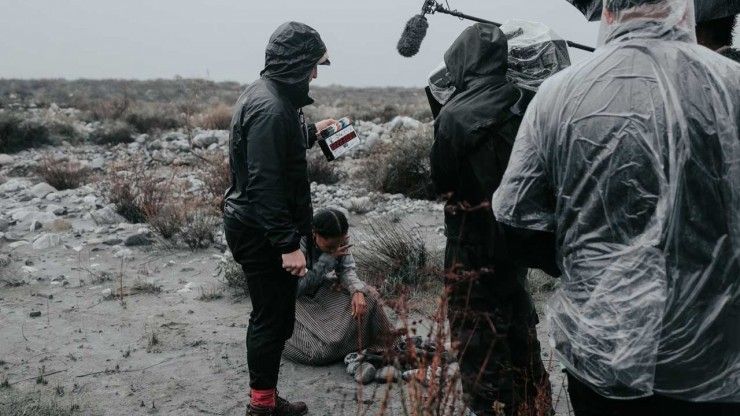
Camera Department
Cameras and camera departments are pretty important to making movies. The Academy seemed a little late to recognize this in 2019, but better late than never.
The Cinematographer, or director of photography, is in charge of this team. There will also be a 1st assistant camera (or AC), 2nd Assistant Camera, a focus puller, a camera operator, a loader, or a DIT, and on it goes again depending on size and format.
We have posts covering all these jobs, as you can see in the prior paragraph because we’ve spent a lot of time on No Film School diving deep into the craft of the camera department.
But a camera department is just one piece of the bigger puzzle. A good one truly relies on the support of our next group:
Grip and Electric Department
These are two large departments with a lot of production roles, plus a lot of terms and jobs many people aren’t familiar with.
Sure we know that a camera is important to making a movie. But how many people know about what a best boy does, and how critical that role is to the process?
Let’s start with the keys in this area.
What is a gaffer?
The gaffer is the chief electrician on a movie, in charge of planning and executing the lighting scheme, the term comes from the employment of overhead lighting and the ‘gaff’ being used to manipulate the lights.
Check out this post where renowned Gaffer John Higgins reveals secrets behind lighting some of Hollywood's biggest films.
The rest of the gaffer’s team are the electrics or electricians.
What is a key grip?
The key grip is the chief of the grip department, whose main purpose is ‘camera support’. If the camera needs to be on a dolly, then the grip department will manage the implementation of the dolly, or any other similar gear.
A dolly will be housed on the grip truck. So would a crane, etc.
What is a best boy?
The best boy is a term used for the person of either gender who is the foreman under the key grip or gaffer. In a large crew, the key grip and gaffer would work closer to the DP, while the best boy of either department would then work with the grips and electrics to fulfill the plan.
There are shoots where the best boy might be a “swing” meaning they’d work for both grip and electric.
You may think of the crew on your project as being a mass of people who can all grab a c-stand, hang a light, or wrap a stinger. (If you don’t know what a stinger is, check out our film lingo dictionary)
But it would be a huge rookie mistake to think that the “crew” roles and tasks are interchangeable. First off, people outside of the unions are NOT allowed to touch the gear from another department on a union gig.
So a director can’t ‘help out’ by grabbing a sandbag.
There are legal reasons for this, and some include liability and safety.
While electrics and grips are sometimes called “swings” meaning they’ve worked in both departments before, the roles of each department are specific. You also can’t expect a PA, or a camera operator, or anyone else, to fill into those roles effectively.
If you’re doing things on a shoe-string, DIY style, just keep in mind that you really need a grip and electric person IF you need elements specific to grip and electric crews.
For example, if you are renting a dolly with a track, you’ll need a grip truck and a grip. And that can’t fall to the same person that is operating the camera. They don’t have enough hands.

Hair and Make-up Department
The hair and make-up department does what it sounds like, so there is less mystery here. But one thing people often forget or overlook is that hair and make-up is not just useful when you have a lead actress, or when you have something specific like a blood effect.
Hair and make-up is a requirement on any professional set for every principle talent seen on screen.
Shoots that want to run and gun, and need to save the time required to get every actor through hair and make-up, plus the cost of the additional person often skip a hair and make-up department. But if you’re looking at footage later and there is a blemish on your lead that is distracting, this will be why.
Base layers of hair and make-up make your talent feel comfortable and give them the sense that they are being taken care of. Are you putting them in a position where they will look right for the scene? Or are you asking them to increase their vulnerability?
Try not to ask performers to handle this themselves either. I.e. "bring some make-up and apply it yourself." It'll leave the production looking a little unprofessional.
Art Department
How your movie "looks" will come down to two factors. One is the device you use to capture the image. The other is what the image you are capturing looks like.
So much of that second factor falls on the shoulders of the art department, and that’s why the department is often large and divided into many subcategories.
The lead, or key, of the department, is the production designer. This is the person who creates the plan and strategy for the look with the DP and director.
Just below a production designer would be an art director, who’s more involved in the crafting, creating, and acquiring level.
But there are sub-groupings as well. A prop department can be massive all on its own with a prop-master heading it up. This would be everything the actors touch and use on set.
If you have weapons as props you may have a separate weapons master.
Think about all the swords and shields in a battle scene in Lord of The Rings, or Game of Thrones.
And what about all that armor they wear?
The wardrobe department is another contingent of the art department. Who is going to design, make, or buy/rent all those costumes?
Then there is set dressing. You’ll have to dress every set and location, not with props, but with the little items that create a character within the space. The look and feel of your world.
Say you find a bedroom location you love and you can’t afford to rent furnishings so you just shoot with what's already there. A set dresser will help you arrange all of it for the best possible look. They’ll be there to “greek” the brands that you can’t legally show. They’ll work with the locations department to make sure after the shoot is done you leave the room looking the way you found it.
Hopefully...
There is also an entire construction team when it comes to building sets.
I’ve had crews build sets on sound stages and on locations. It’s a great part of the process if you can afford it, and it gives you tons of control over the visual quality of the world you are shooting.
Do you need an entire art department on a low-budget short?
No. But you need as much as you can afford. If you don’t have people working with you on this part of your project it won’t look good, and that’s a guarantee. The look of the movie has so much to do with how you arrange the elements that you capture. It cannot be overstated. What good is a nice camera if the room you are shooting is bland, or worse inconsistent in its color scheme?
White walls, verticle blinds, and an old couch. Hallmarks of your buddies apartment that he shot his short in. At the very least try and address how the colors look together or get a piece of art from another room that matches the desired color palette.
Find the balance between the toys and gear you love to work with and the importance of making sure your set has the right look from the get go.
Here is a great resource on DIY production design.
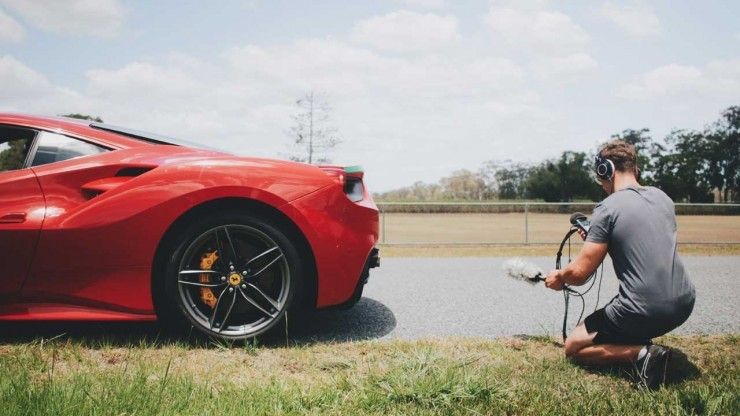
Production Sound
It’s easy to overemphasize the look of a finished project at the risk of ignoring or minimizing the sound.
Sadly, it's another common rookie mistake and one you should avoid.
How many student films have atrocious production sound? How many poor quality movies had to be badly dubbed?
Don’t waste all the time, effort, and money on a project that won't have quality production sound.
Sound design is a huge part of what makes a movie work. Look no farther than the original dailies from Star Wars to see just how not-great a great movie can be before the sound design process begins.
You could make a strong case that Star Wars works because of its sound, not it’s visuals.
When we think of Darth Vader, one of cinema’s most iconic characters, we think of his mask. His armor. His lightsaber. But if you remove the heavy breathing, the deep bass of James Earl Jones voice, the sound of his lightsaber crackling to life… what do you have? A kind of goofy robot costume?
Now, those elements I mentioned added in post, and part of the sound design on the whole, NOT production sound. But the point is to simply emphasize how critical good sound is.
If you don’t have the burgeoning Skywalker Sound to lean on or the genius of a John Williams score, and you need to get some good sound the first time through, production sound is the answer.
You’ll hear over and over again that film is a visual medium. You’ll obsess over the look, the gear, the cameras… the colors. And you should.
But without great sound, no movie can be competent. There is no wiggle room with sound. It must be of high quality or else the project won’t even be tolerated.
What some might consider poor visuals can ‘work’ as a stylistic choice.
Poor sound?
That's always a har pass.
Locations Department
Our ultimate movie location scouting guide is a very useful resource when it comes to the task of understanding and managing locations. It also comes with a free tech scout checklist that will come in handy when you're making your location decisions.
The basics are that you want to start scouting for locations you’ll need, and locking them, as early as possible. If you can afford a locations department o your project, you should absolutely have one.
Having a location scout means having someone who can use their experience and contacts to find the perfect locations for your shoot. It also means having someone there to manage, and massage, the dynamic with the location itself.
If you don’t have a locations department, complete with a manager, and scouts, you’ll end up with producers and directors doing this, and it’s such a time consuming and important task, that they will end up being unable to fulfill other requirements of their job. That’s just how it goes.
So, what's the solution here if you can’t afford a locations department?
One is to get creative with your location options, or your script. How can you rewrite a scene to fit it to a great location you know you can get?
Maybe you can strike a deal with someone who has access to a location you need, perhaps offer a producer credit or larger role on the film.
Lastly, you can consider making enough budget for one locations person, and find someone looking for a bigger credit who has experience at the lower levels of the locations department on larger productions.
Craft Services
“Crafty” is how people eat and drink on set. It’s important that you never skimp here. You don't need to have lobster every day for lunch, you just have to put the requisite time and energy into this department, and hire people who can make sure the crew is taken care of.
Otherwise, your reputation will sink like a stone, and your crew won’t want to work on this project, or any other you do.
Here is our list of Food on Set Do’s and Don’ts.
A craft services department doesn’t have to be as huge as it is on a major production. On a small shoot you can get away with one person managing this, but if you choose to have a producer or production assistant handle it, make sure they take it seriously and do it with care. The stakes are very high for you and your shoot. People can't and won't work if they don't have food and water.
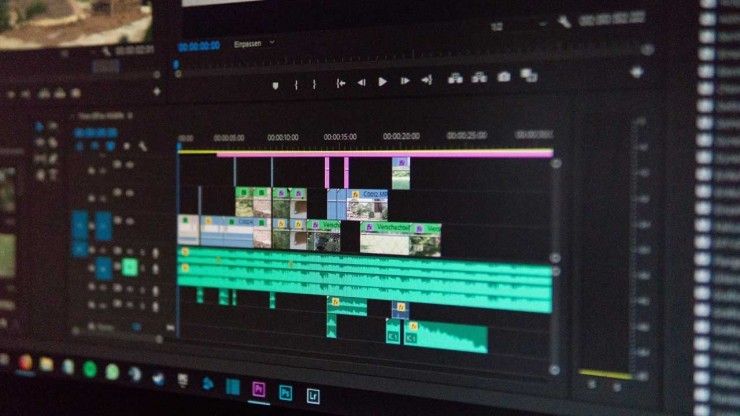
Editorial and Post Production
Post-production will vary depending on who you are delivering to. If you’re making an indie, you won’t have the same types of requirements that the assistant editors on Westworld do, for example.
But knowing their workflow helps because you can get a sense of how huge a post-production department can be.
Yes, you’ll have an editor, but you’ll also want assistant editors, colorists, VFX specialists, sound designers, and sound editors.
Your VFX department could be huge in its own right.
How you start and build an editing career is another subject and one that gives you insight into what a post-production team looks like.
There is also your score, which you might have a composer write, then have performers record which brings along a whole other team of artists, mixers, and producers.
Post-production is so massive that oftentimes it’ll have a post-production supervisor.
Again, what do you do if you can’t afford any of this?
First off don’t ever plan for that “fix it in post” thing. That never works.
More than that, make sure your budget has a lot of money set aside for post that you simply won’t touch.
Even on projects where the director handled almost ALL the editing tasks, I found we still needed money for post.
Also, even if your director wants to edit the movie, try and get another editor onboard. Their eyes and insights are invaluable. The director has a vision of the movie. Let someone else give their two-cents. Many movies are saved in the editing room because of this.
You know who is who in a film crew, so what's next?
Ok now you have a basic idea of the major production departments, and what they typically entail.
How you proceed on your project is up to you, but knowing what all these departments do helps you make good decisions about how to utilize them.
Start making budgets for your projects by setting aside money for each of the departments. If you have all of them represented, you get a pretty good idea of what it takes monetarily to make a movie.
You can also consider how all these departments can offer you jobs and careers in the industry. A lot of people want to direct their own projects, but there aren’t a lot of directing jobs out there. If you are willing to learn within other departments you will find yourself 1) making contacts, 2) making money, and 3) developing your own knowledge base on how to make your own passion project the professional way.
If you don't know where to begin... start with our post on how to become a filmmaker!
Your Comment
9 Comments
I realize you are not trying to list every position but there are two major missing roles that are critical to any production larger than friends and family crews. Script Supervisor and Post-Production Supervisor. One saves the film from disaster during shooting and the other during Post.
March 19, 2019 at 1:58PM
Hi Stephen, agreed those are super important roles. The chart does list script supervisor under the Continuity heading but Post jobs were left off as this was intended to show on-set jobs.
March 22, 2019 at 3:13PM
Actually, the glaring lack of the Costume Department is pretty mind boggling... while it may not seem important to you - it actually is crucial to any film getting made and carrying out the directors vision.
April 25, 2019 at 7:04PM
I guess everyone is making films for free and there are no rental fees etc. to be paid. There is a woeful oversight in not adding accounting and payroll into your list. Well unless your doing it for the exposure. The above list is local community theater without these groups added.
March 20, 2019 at 7:15AM, Edited March 20, 7:16AM
Agreed! Everyone's gotta get paid! Guess we should have made it clearer that this chart was to show jobs that are performed mainly on-set.
March 22, 2019 at 3:15PM
Given the inclusion of the production office, its coordination and support positions, your response is truly curious, April.
Production accounting is an underappreciated segment of the production management team and its staffs are no less responsible for the smooth running of set operations than the crafts labor who hang the lights or run the cameras.
Good production accountants are thoughtful analysts and advisors, diplomatic mediators and therapists, and insightful managers. They possess a depth of cross-functional production knowledge that goes beyond knowing simply what a c-stand, a duelly, or a translight are and how they fit into set operations - they know what these and all other production-related items cost to rent (or buy) and how long the show will require them. They understand payroll rules and obligations for all departments and across several crafts unions and guilds.
They navigate sets as easily and often as they navigate spreadsheets.
I would urge you to focus an article on this under-served and most critical segment of the production management team. While the title of "production accountant" may not sound as intriguing to some as, say, "camera operator," that notion is supported only by a lack of knowledge and deep understanding for the position.
April 18, 2019 at 9:05AM
Once again, a listing of all film crew in which Security is left out.
Just because we aren't directly related to what you see on screen, doesn't mean we aren't important.
You won't be putting anything on screen if all your equipment was stolen overnight, your camera battery charging station lost power, your wardrobe truck burned down, or your set was vandalized.
August 2, 2019 at 1:52PM
Dear George, Interesting presentation on Film Crew Positions And Why All Jobs on a Movie Set Matter. But although you mentioned the "Art Dept."briefly. There's No mentioning nor the importance of the art work of storyboards. The relationship between the art department and the director is critical and even more the leading thing on most directors mind is presentation and it's delivery as well the persentting and making understanding of the vision and efforts to executives and the production workers. This is not a critical critique of your work done here. But my concern in making this comment is based on the trend I see happening in the making of film projects and how the lack of usage with or mentioning of the need of the artists that create the vision in storyboards. The importance is the contribution it makes to all the aspects of film creation.
August 7, 2019 at 4:12PM
Thanks for this article. I know you just couldn't include everyone. It would be 100 pages long. This is more than enough. Keep punching!
July 24, 2020 at 6:00PM